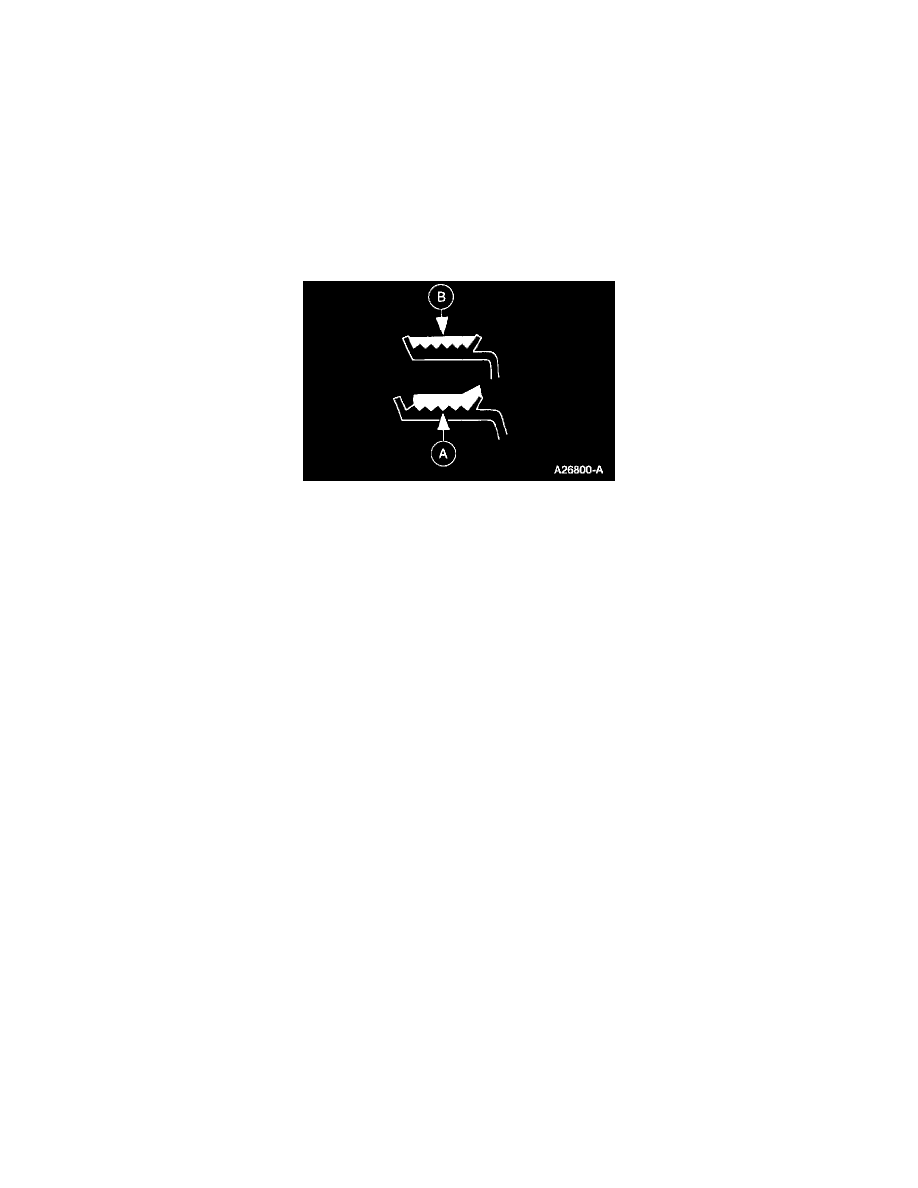E 250 3/4 Ton Van V8-5.4L CNG VIN M (1997)

Drive Belt: Component Tests and General Diagnostics
Belt Tension
NOTE: Drive belt tension is not adjustable.
The drive belt tensioner automatically adjusts drive belt tension. See: Drive Belt Tensioner/Testing and Inspection
Drive Belt Misalignment
CAUTION: Incorrect drive belt installation will cause excessive drive belt wear and can cause the drive belt to come off the drive pulleys.
Non-standard replacement drive belts can track differently or improperly. If a replacement drive belt tracks improperly, replace it with an original
equipment drive belt to avoid performance failure or loss of belt.
With the engine running, check drive belt tracking. If the (A) edge of the drive belt rides beyond the edge of the pulleys, noise and premature wear can
occur. Make sure the (B) drive belt rides correctly on the pulley. If a drive belt tracking condition exists, follow the procedures below:
^
Visually check the drive belt tensioner for damage, especially the mounting pad surface. If the drive belt tensioner is not installed correctly with
the dowels in the mounting bracket holes (4.2L only), the mounting surface pad will be out of position. This will result in chirp and squeal noises.
^
With the engine running, visually observe the grooves in the pulleys (not the pulley flanges) for excessive wobble. Replace components as
required.
^
Check all accessories, mounting brackets and the drive belt tensioner for any interference preventing the component from mounting properly.
Correct any interference condition and recheck belt tracking.
^
Tighten all accessories, generator mounting brace and drive belt tensioner retaining hardware to specification. Recheck the drive belt tracking.
Drive Belt Noise/Flutter
Drive belt chirp occurs due to pulley misalignment or excessive pulley runout. It can be the result of a damaged pulley or an improperly aligned pulley.
To correct, determine the area the noise comes from. Check each of the pulleys in that area with a straightedge to the crankshaft pulley. Look for
accessory pulleys out of position in the fore/aft direction or at an angle to the straightedge.
Drive belt squeal is an intermittent noise that occurs when the drive belt slips on a pulley during certain conditions, such as engine start-up, rapid engine
acceleration or A/C clutch engagement.
Drive belt squeal can occur under the following conditions.
1. The A/C discharge pressure goes above specifications, causing one of the following:
^
The A/C system is overcharged.
^
The A/C condenser core airflow is blocked.
2. The A/C OFF equalized pressure (the common discharge and suction pressure that occurs after several minutes) exceeds specifications.
3. Any of the accessories are damaged or have a worn or damaged bearing or internal torsional resistance above normal. All accessories must be
rotatable by hand in the unloaded condition. If not, inspect the accessory.
4. Fluid gets on the drive belt. This includes power steering fluid, engine coolant, engine oil or air conditioning system lubricant. If fluid gets on the
drive belt during repairs, clean the drive belt with soap and water, and thoroughly rinse with clean water. The drive belt does not have to be
replaced if no apparent damage has occurred.
5. The drive belt is too long. A drive belt that is too long will allow the drive belt tensioner arm to go all the way to the arm travel stop under certain
load conditions, which will release tension to the drive belt. If the drive belt tensioner indicator is outside of the wear range window, replace the
drive belt.
NOTE: The drive belt tensioner arm must rotate freely without binding.
6. The drive belt tensioner is worn or damaged.
